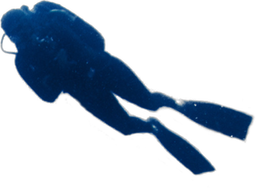TheoceanisadeeperhueofblueoffthecoastofFlorida.About30meters(100 feet)down,thewaterisclear.Thecolorsofthereefarebrilliant.Nearanorangebarrelspongeisagroupoffish.Theyseemtohangmotionlessinthewater.Theylooklikeaherdofzebras.Buttheirstripesarereddish‑brownand white.
Ashortdistanceaway,adiverappears.Heaimsthebarbedendofaspearattheheadofthenearestfish.Hepullsthetriggerofhisspeargunandstrikesthefish.Noneoftheotherfishmove.It’sasiftheyhadn’tnoticedwhatjusthappened.Thedivershovesthedeadfishintoapouch.Thenhetakesaimatanother fish.

AFishOut
ofItsWaters
Whywouldadiverkilllionfish?Becauselionfisharenotanaturalpartoftheenvironmenthere.Theyareaninvasivespecies.Theirpresenceherehurtslocalfishpopulations.It’salsobecomeaseriousthreattothereef itself.
LionfisharenativetotheSouthPacificandIndianoceans.There,theyliveinbalancewithothercreatures.Birdsandfisheatlionfisheggs,whilelargerpredatorseatlionfish.ButintheAtlanticOcean,theyhavenonaturalpredators.Thereisnothingtokeepthelionfishpopulationin check.
GettingaFin‑hold
So…howdidtheselionfishgetintheAtlanticOceaninthefirstplace?Therearesomeinterestingtheories.TheyarrivedheretrappedintheballasttankofPacificcargoships.AbreedingpairescapedfromaFloridaaquariumduringHurricaneAndrew.Ahotelaccidentallypumpedlionfishoutto seafromitslobby aquarium.
Thelikelyversionisthattropicalfishownersintheareadumpedtheirlionfishouttosea.Thiscanhappenoncethefishgettoobigfortheir aquariums.
Thefirstconfirmedreportoflionfishwasin1985offthecoastofDaniaBeachinFlorida.Since2000,thepopulationhasexploded.That’sabig problem!




